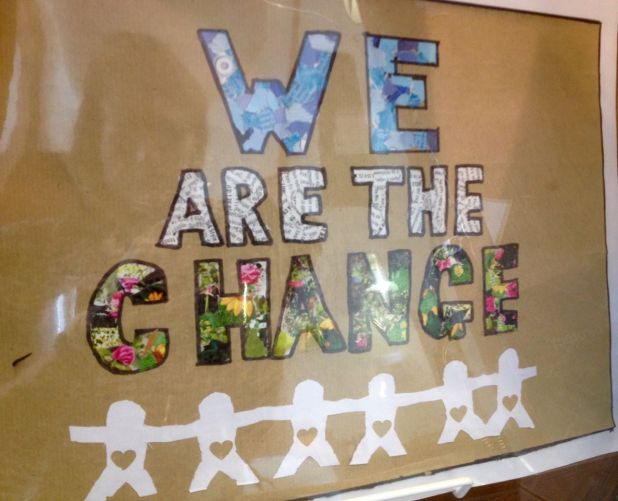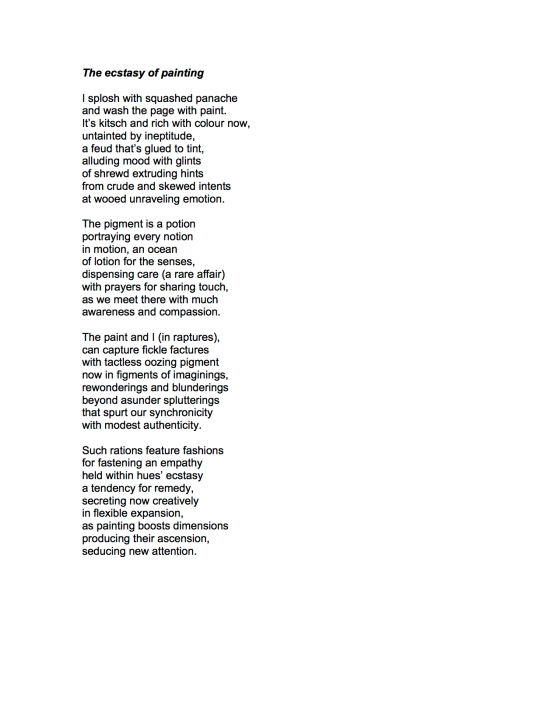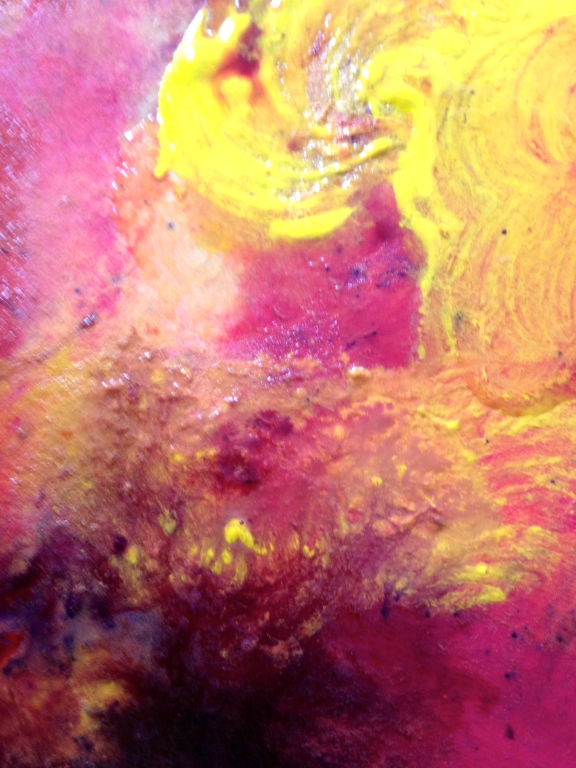I want to teach secondary art and design. I am dedicated to this new career path. It culminates my considerable experiences as an artist and arts educator. Academia is a fruitful place to work, but it has failed to satisfy my career, nor my vocation, which lies in secondary education.
I am certain of this because I want to share the knowledge and skills in art and design, art theory, and media studies, which I have accumulated over the past few years, to young people. My aim as a teacher is to inspire my students and meet the needs for all learners, despite any disadvantages or barriers posed to them by society. I want to show students how they can reach their full potential, and understand what they never thought they could.
The highlights of my teaching experiences have been guiding 16-18 year olds at Cambridge Regional College towards their Art Foundation degree. Packed classes with a broad range of students with very diverse needs meant some crucially experimental ideas about art making commenced in this space. My teaching at Anglia Ruskin University was catered for first year undergraduates (mostly aged 18), as well as older students. I taught media studies and art theory. This experience confirmed my aptitude as a teacher: earning respect and building collaborative opportunities for my students, and founding novel techniques for learning and assessment.
I have a PG Cert. in Learning and Teaching, which contributes towards my understanding in the nature of teaching and educational issues. I have made a detailed study of different methods of learning and assessment, whilst developing inclusive and effective learning resources. These are applicable to KS3 and 4 Art and Design, the underlying aim being for students to produce skilled and creative artworks, and be able to evaluate art’s history, culture and criticism. These requisites become openings for intensely imaginative and stimulating classes, when I am teaching.
My subject knowledge in art and design is based from my experiences as an artist (in painting, film, installation and performance, with multiple international exhibitions), writer (with a monograph published in 2014 by Bloomsbury, entitled: ‘Making Sense: Art Practice and Transformative Therapeutics’), art critic and lecturer in this subject.
I have worked with children and young people throughout my academic career. One trip to Cambodia, where I taught orphans in a Buddhist temple in the remote countryside, confirmed my desire to show youths how to do things, and how to think about things, which they never thought they could. In this case, I was teaching the Cambodian children art. They had never seen paint before. But soon, with my guidance, they were drawing and painting their beautiful landscape, and their feelings. They could then sell their works to passing tourists. The point of this exercise was to teach the students new skills, new ways to express themselves, and build up a source of income (crucial, in their destitute lives). I could not solve the horrific political, social and economic problems in Cambodia. But I could show the children new ways of looking at their country; opening new avenues.
This is an example of my motivation and commitment to teaching, and the reason why I teach. My intellectual qualities have led me towards a PhD in Art Theory from Cambridge University, an MA in Fine Art, doing my BA in a year. But these achievements aren’t enough, and yet they are too much. I always want to return to the classroom, which first inspired me, when I was at school.
There’s the thing. The stuff at the end, about being inspired when I was at school, is bollocks. School was awful and I can’t remember it anyway. But the rest is true. Suddenly, it dawned upon me that I could achieve my life aims somewhere else, not just in a university. I want to help people understand things that they never thought they could. This is my life’s purpose. So far I have been committed to failure, in academia. Rejection after rejection. Each one damages a little bit of my soul. The damage adds up; I feel broken.
But perhaps life does not have to be so hard. Perhaps I can’t achieve a professorship at Oxbridge, or a hip art school, or somewhere dynamic and exciting. Perhaps I am not able to do this. What I have come to realise is that, in any case, perhaps I do not need to do this. Perhaps I can be far more fulfilled with less kudos.
In fact, what I want to do in life is far smaller than my utopian aims. So much for ‘I must change the world’, or ‘I must ultimately become a Professor’, or even, trying to widen my ambitions to make them easier to achieve, ‘I must be a lecturer in art theory, art history, art practice, media studies, or anything near, on any course at any university in the world’. None of these are in fact achievable, so it seems.
Maybe for a reason. I’m not going to get all trick-cyclist about this. There’s no such thing as fate. Nothing except very very hard work makes things happen. But suddenly, with a new idea (once again, as it often happens, brought forward by my mother, who is Always Right), I am discovering something that I can achieve, which would also meet my aims in life.
I can help people understand things they never thought they could by teaching at a school. This will require yet another qualification, but it would guarantee a career and, following the PGCE, an immediate job. I could teach art and design. I could enthuse my students with inventive and imaginative methods of making and thinking about art.
My research? My film? My books? I could feasibly still do all of this. It wouldn’t be easy, but it’s never been easy. I’ve always felt like a lonely wanderer in academia. It’s so hard to get a job, any job, and even harder to get the right job. Research is supposedly, but hardly, supported. Publishing books are supposed to increase your reputation; but they haven’t done, in my case. It’s extremely hard work, with lots of stress, with no cream cakes. And I don’t like cream cakes anyway.
The rewards I seek are the following: I wish to make a connection with my students, build trust, respect and empathy. I would do this by collaborating with them as people, as individuals, with different – but equal – needs, hopes and interests. I want to inspire and encourage students to dream, and work towards achieving the dreams (in small, incremental stages). I want students to look forward to my classes. I need to do all this through making and thinking about art.
In fact, I have come to realise (just now), that these rewards probably can’t be obtained at a university. Work needs to be done earlier. Maybe becoming a secondary school teacher is a good idea, then. If I can make it happen.
Hence my meeting with the An Important Person at the Faculty of Education, Cambridge University. He was realistic about my chances, and suggested I get a minimum wage job, whilst I look for a teaching position anywhere in the world that might take me. ‘I wouldn’t teach’, he said, informing me about the abstruse levels of stress the job entails.
Yet I am determined to give this a go. I have found 3 opportunities for school-direct training or PGCE (‘Not worth it,’ he said, ‘don’t quote me.’) at various locations in Cambridge, London and (near the horses) in Amersham. Is this the start of a new adventure? I hope so. Hope is the most powerful, inexhaustible fuel there is. Still perilous, but infallible.




 followed. She must flee.
followed. She must flee.














You must be logged in to post a comment.